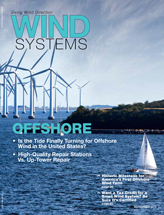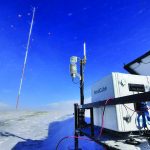CCU’s School of Coastal and Marine System Science (CMSS) is deploying its meteorological and oceanographic instrumentation buoy to support long-term student research at the McManus Reef off North Myrtle Beach. The buoy system will also be part of broader experiments continuing the school’s work on evaluating the potential for wind energy development off South Carolina’s coast.
The CMSS faculty, staff, and students deployed the instrument system to feed near real-time measurements that will support wind energy studies for validation of CCU’s interactively coupled ocean, wave, and atmospheric modeling system. The system will also feed into the National Weather Service’s weather modeling system.
CCU, the University of South Carolina, and the South Carolina Institute of Archaeology and Anthropology received $1.5 million in federal and state grant money to use the school’s geophysical mapping system to characterize areas that wind developers should embrace or avoid off the coast.
According to Paul Gayes, the director of the school and the lead technical investigator, the project will use continuous geophysical mapping of certain portions of the ocean floor to determine what wildlife habitats and cultural resources are just off the coast.
The Coastal Explorer, CCU’s 54-foot aluminum research vessel, is assisting in deployment of the buoys and transportation to help with the complex operation.
The buoy at Ron McManus Reef and a second instrument system installed off Frying Pan Shoals Light Tower — 25 miles offshore of Cape Fear — was deployed from the National Oceanic and Atmospheric Administration (NOAA) ship, the Nancy Foster, during a cooperative fishery habitat survey conducted by NOAA and CCU scientists. The cruise is supporting two coastal marine and wetlands studies (CMWS) master’s degree projects and aiding in the improvement of mapping of critical habitat in the region.
— Source: Coastal Carolina University































